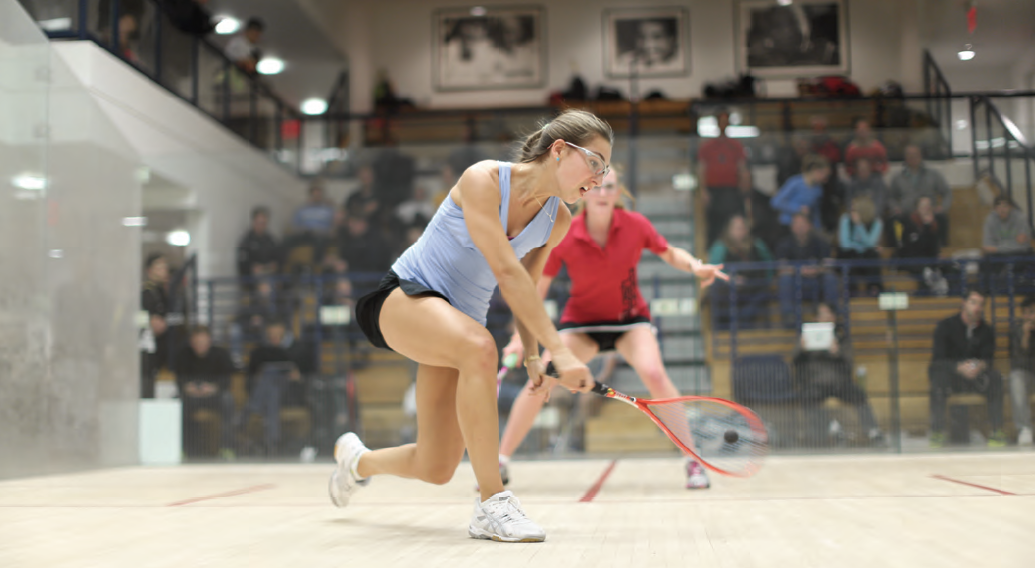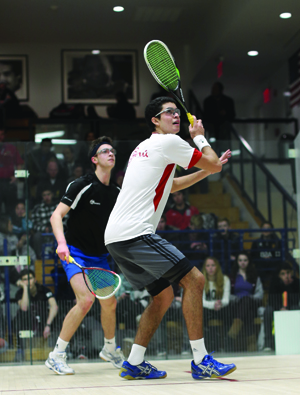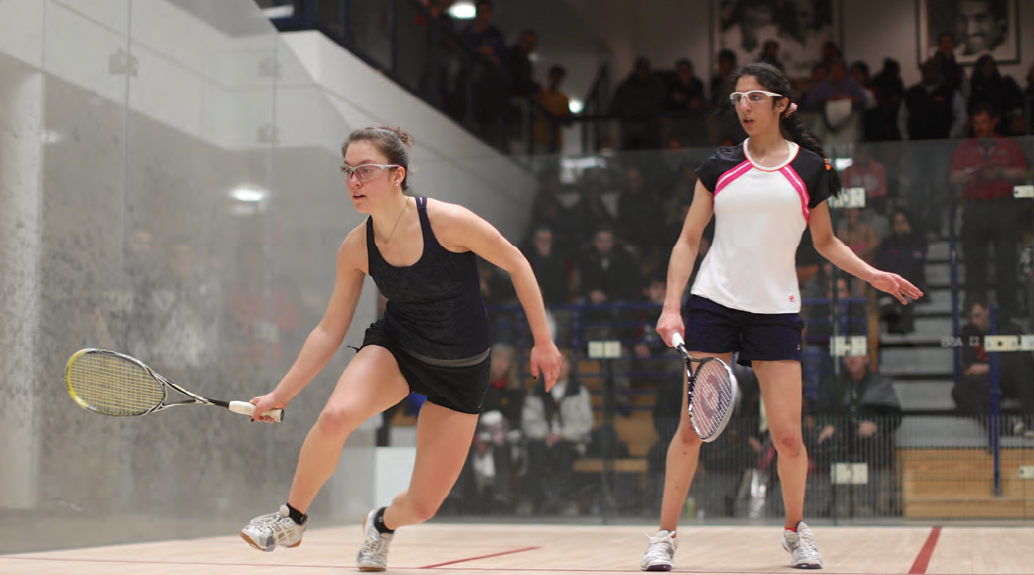
By Jay Prince
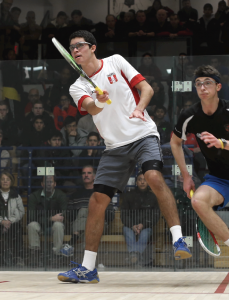
He picked up a squash racquet at the age of six after first playing tennis for a few years. He became hooked to the point of being determined to master his forehand and backhand. In no time, he began adding a top-spin backhand drop shot to his arsenal that so easily developed from his tennis game. Before he knew it, training at five thousand feet took on a whole new meaning because he realized that squash requires a different level of fitness.
Coached by his dad, with just a smattering of other kids to play, tournaments started entering into the equation. After all, his pops had been his country’s national champion, the national team coach and the young boy was showing promise on the court. Fast forward eleven years and his squash resume has become eye-popping.
In an era of the game dominated by Egypt at all levels, Peru’s Diego Elias has bucked the trend and made a name for himself. Elias, a lean six-foot-two-inch smooth moving athletic marvel, started out his playing career by capturing every junior event his home country had to offer. And at fourteen years old, Elias began an annual pilgrimage north to play in the U.S. Junior Open every December.
While virtually every junior player who has entered the USJO did so with dreams of winning at least once, Elias has made it a habit.
In 2010, Elias dropped just one game while running away with the boys under-15. A year later, he jumped up to the under-17 and lost just four games—unfortunately for him, three of those came in the final. Two-thousand-and-twelve saw him cough up three more games, but this time they were scattered over six rounds on his way to securing the under-17. This time around, Elias recorded a clean sheet in the under-19 to take him to a remarkable record of three titles, one runner-up, and a match record of 75-8—a prolific mark that would be hard-pressed to find a rival in the USJO history books.
The vast majority of juniors in the United States get most of their playing experience in lessons and by playing other juniors. For Elias, playing other juniors really hasn’t been an option as part of his regular training routine.
“There are juniors to play,” said Elias just before this year’s U19final, “but at a lower level. So I play adults. I train with my father. and am home-schooled so I am able to train and practice a lot.”
When asked about the difference between playing juniors versus adults, Elias sums it up simply: “In juniors, you can hit the ball hard and do whatever you want. But if you do that with adults, they will kill you.”
As a result, Elias displays a mature game, taking advantage of not only the length and width of the court, but also the height. And his composure and presence are becoming legendary. There is no arguing with referees; no moping around the court when he makes errors—which are rare to begin with—and he wrests control from his opponents from the first serve.
In addition to his three titles in the States, Elias has won the British Junior Open under-17, twice won the Pan American Junior Championships under-19, reached the quarterfinals of the World Junior Championships last summer in Poland and, now that high school is over, he’s determined to begin playing on the professional tour full-time next year.
Elias sums up his passion for squash in simple terms—“It’s a beautiful game.”
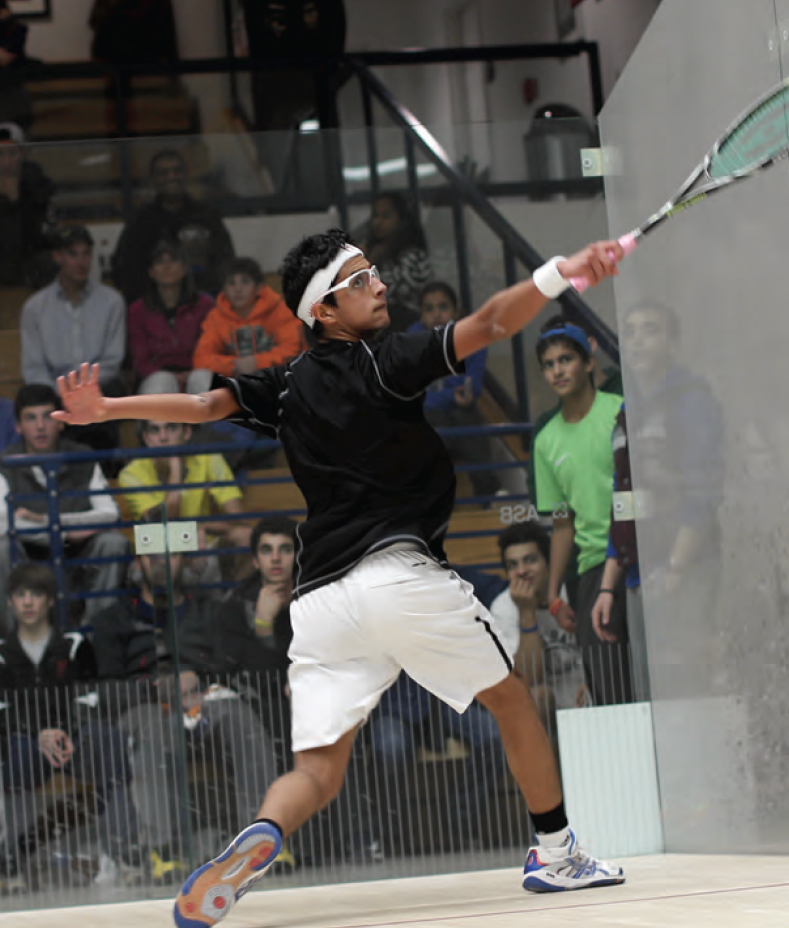
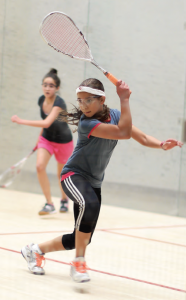
On the girls’ side, American Sabrina Sobhy has quietly made a name for herself, stepping out from the shadow of her older sister, Amanda, who dominated the junior squash world in 2009, 2010, and 2011. Sabrina began to assert herself as a world-class junior with back-to-back runner-up finishes in the U15 in 2010 and 2011.
Last year, Sabrina brushed aside her nemesis, Reeham Sedky, in the under-19 final after losing to Sedky four straight times in the USJO—2013 under-13 final; 2009 under-13 semifinal; and the 2010 and 2011 under-15 final. Showing that she has overcome whatever block she had against Sedky since that 2011 loss, Sabrina again captured the USJO under-19 this year by defeating Sedky in a four-game final. The last time Sabrina fell to the Seattle-based Sedky was in a five-game marathon at the 2012 Pennsylvania Junior Championship Tour event.
Like her male counterpart in the under-19, Sabrina Sobhy has been coached by her father, Khaled Sobhy, and dominates her matches with ball control and a calm demeanor on court. She plays a complete game, taking advantage of the entire court, mixing in change of pace to frustrate her opponents.
And like Elias, Sabrina has been making inroads internationally. In 2012, she reached the third round of the World Junior Championships. A year later, she advanced to the quarterfinals and helped lead the American girls team to their second consecutive second place finish in the team event. Also in 2013, she played the British Junior Open under-19 where she reached the quarterfinals—and she won her first women’s professional tournament in November, taking the Mercedes of Scottsdale title as the third seed.
Less than two weeks after winning the USJO this year, Sabrina turned seventeen years old. Standing before her is not only a bright future in collegiate and professional squash, but also another opportunity to lead the American contingent to a third straight strong finish in the 2015 World Team Championships. If the USJO girls under-19 was any indication, where all four semifinalist were Americans (only Olivia Fiechter will be done with junior squash after this season), the U.S. girls team is in good hands with Sabrina leading the way.
Despite the snow storm and freezing rain that threatened to derail the 2013 U.S. Junior Open on the first day, Yale University, Wesleyan University, Choate Rosemary Hall and Hopkins School hosted a spectacular display of athleticism, perseverance and resiliency for players, coaches, families and administrators alike. The sport is in good hands with today’s junior champions.
